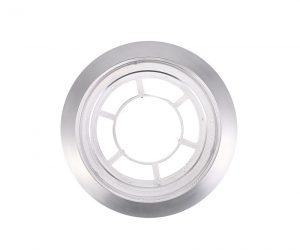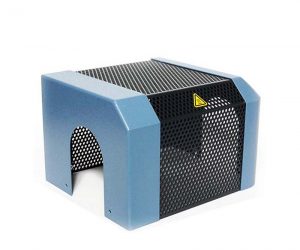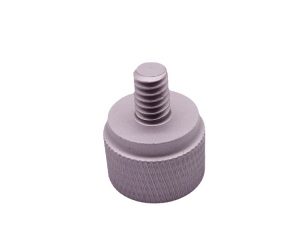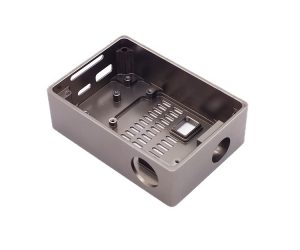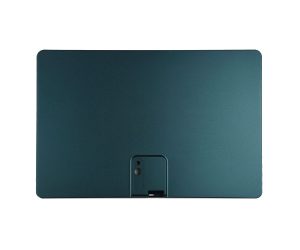TPR (Thermoplastic Rubber) overmolding is an injection molding process where a layer of TPR material is molded over a pre-formed substrate, typically made of rigid plastic or another material. This process allows for the creation of parts with a soft and flexible TPR surface combined with a rigid core, offering enhanced grip, comfort, and impact resistance. Here's a comprehensive guide to TPR overmolding molds in injection molding:
- Mold Design Considerations: TPR overmolding requires a specific mold design to accommodate the dual-material injection process. The mold consists of two or more cavities, with one cavity dedicated to molding the substrate and the other(s) for the TPR material. The substrate cavity should have sufficient draft angles to facilitate easy demolding of the part.
- Material Compatibility: Ensure that the TPR material chosen for overmolding is compatible with the substrate material to achieve good adhesion and bond strength. Material compatibility testing and sample trials can help determine the best combination for your specific application.
- Mold Temperature Control: Proper mold temperature control is critical in TPR overmolding to ensure optimal bonding between the TPR and the substrate. The mold must maintain a specific temperature range to achieve a strong bond without causing warping or deformation of the parts.
- Injection Molding Machine Selection: Choose an injection molding machine suitable for the TPR overmolding process. It should have the capability to handle multi-material injection, with separate injection units or a capable co-injection system.
- Injection Process: The injection process for TPR overmolding involves first molding the substrate material in one cavity and then injecting the TPR material into the adjacent cavity. The TPR material flows around and bonds with the substrate during the overmolding phase.
- Bonding Mechanism: The bonding between the TPR and substrate is primarily mechanical. During the overmolding process, the TPR material fills the undercuts and recesses on the substrate surface, creating a strong interlocking bond.
- Part Ejection: TPR overmolding molds may require special ejection mechanisms to ensure proper part release without damaging the delicate TPR surface. Ejector pins or air ejection systems can be used for this purpose.
- Quality Control: Implement strict quality control measures to inspect and test TPR overmolded parts for bonding strength, dimensional accuracy, and surface finish. Non-destructive testing methods may be used to assess bond integrity.
- Tooling Material: Choose high-quality tooling material for the TPR overmolding mold to ensure durability and longevity, as the mold will undergo repeated cycles during production.
- Application Areas: TPR overmolding is commonly used in the manufacturing of various products, including grips for tools and handles, toothbrushes, medical devices, electronic device casings, and automotive components.
TPR overmolding offers a cost-effective and efficient method to create multi-material parts with improved functionality and aesthetics. By following the guidelines mentioned above and collaborating with experienced mold designers and manufacturers, you can successfully incorporate TPR overmolding in your injection molding projects and achieve high-quality, innovative products.
TPR overmolding is a cool technique that blends thermoplastic rubber (TPR) with rigid plastic to make one awesome product. TPR is like a flexible, rubbery material that can be easily molded.
The best part about this tech is it helps make products that feel better and look cooler without losing their strength. It's great for making things that are easier to hold, more comfortable, and tougher against bumps and chemicals.
First off, because TPR is so bouncy, it soaks up a lot of energy when hit, making the final product really resistant to impacts. This is super handy for making car parts, appliances, and other stuff that needs to stand up to knocks.
Next, TPR can be quickly shaped into all sorts of fancy designs through injection molding. That means it's perfect for creating intricate electronic gadget covers, toys, and anything else needing a detailed touch.
Plus, TPR stands strong in harsh conditions, whether it's hot, under pressure, or around strong acids or bases. This makes it ideal for items used in tough environments.
Last but not least, the mix of rubbery feel and easy shaping ability gives products made with TPR overmolding a nice touch and look. Think phone cases, sneakers – stuff where how it feels and looks matters a lot.
In short, TPR overmolding is a game-changer in manufacturing, letting us create items that are comfier, sturdier, and prettier all at once.
What is TPR Overmolding Mold?
TPR overmolding mold is an injection molding process that combines two different materials together. TPR stands for thermoplastic rubber, which is a flexible and durable material that can be covered with another material such as plastic or metal. This type of overmolding mold consists of two parts: the substrate mold and the cladding mold. The substrate mold is responsible for forming the base of the product, while the coating mold wraps it with TPR material. Through this wrapping process, a strong bond is formed between the two materials, resulting in a product that combines the advantages of both.
Why Use TPR Overmolding Mold?
TPR overmolding mold is a process of injection molding a thermoplastic rubber (TPR) material over a rigid plastic substrate. TPR is a type of thermoplastic elastomer (TPE) that has rubber-like properties and can be easily processed using existing thermoplastic equipment. TPR overmolding mold can provide benefits such as improved grip, comfort, impact resistance, and chemical resistance for the final product. TPR overmolding mold can also reduce the need for primers, adhesives, or mechanical fasteners to bond the two materials.
Some examples of applications that use TPR overmolding mold are:
- Handles and grips for tools, appliances, medical devices, and sports equipment
- Buttons and knobs for electronics and automotive components
- Seals and gaskets for industrial and consumer products
- Shoe soles and inserts for footwear
How to Design TPR Overmolding Mold?
TPR overmolding is a process of molding a thermoplastic rubber (TPR) material onto a rigid substrate, such as plastic or metal, to create a composite part with enhanced properties. TPR overmolding can improve the aesthetics, functionality, and durability of the final product. To design a TPR overmolding mold, there are several factors to consider, such as:
- The compatibility of the substrate and the TPR material. The substrate and the TPR material should have similar melting temperatures and coefficients of thermal expansion to ensure a strong bond and prevent warping or cracking.
- The mold design and configuration. The mold should have adequate venting, cooling, and ejector systems to prevent defects and facilitate demolding. The mold should also have proper alignment and clamping mechanisms to ensure accurate positioning and dimensional stability of the overmolded part.
- The molding parameters and conditions. The molding parameters and conditions should be optimized to achieve the desired quality and performance of the overmolded part. Some of the key parameters include injection pressure, injection speed, mold temperature, holding pressure, holding time, and cooling time.
How to Process TPR Overmolding Mold?
TPR overmolding is a process that involves molding a thermoplastic rubber (TPR) material over another material, usually a rigid plastic, to create a product with enhanced properties such as flexibility, durability, and comfort. TPR overmolding can be done using two methods: insert molding and multi-shot molding.
Insert molding is a method where the plastic part is placed in the mold cavity and then the TPR material is injected over it. The plastic part acts as an insert that provides structural support and shape to the final product. Insert molding is suitable for low-volume production and complex geometries.
Multi-shot molding is a method where the plastic part and the TPR material are molded in separate cavities and then joined together in a third cavity. The plastic part and the TPR material are molded simultaneously or sequentially, depending on the design and equipment. Multi-shot molding is suitable for high-volume production and consistent quality.
The key factors that affect the quality and adhesion of TPR overmolding are:
- Material selection: The TPR material should be compatible with the plastic substrate in terms of chemical resistance, thermal expansion, and surface energy. The TPR material should also have the desired properties such as hardness, elasticity, color, and texture.
- Mold design: The mold should have adequate venting, cooling, and ejection systems to prevent defects such as bubbles, warping, and sticking. The mold should also have proper alignment, clamping, and gating to ensure uniform filling and bonding of the materials.
- Processing conditions: The processing conditions such as temperature, pressure, speed, and time should be optimized to achieve optimal flow, curing, and adhesion of the TPR material. The processing conditions should also be consistent and controlled to avoid variations and defects.
What are the Challenges of TPR Overmolding Mold?
TPR overmolding mold is a process of molding thermoplastic rubber (TPR) material onto a hard substrate such as metal or plastic. This technology can produce products with stronger functionality, durability, and better appearance. However, TPR encapsulation molding molds also face some challenges that need to be addressed.
The first step is to choose the appropriate TPR material and substrate combination. TPR materials and substrates must have compatible coefficients of thermal expansion, melting points, and chemical resistance. Otherwise, the encapsulated products may experience issues such as poor adhesion, deformation, cracking, or delamination.
Next is the design and optimization of molds and part shapes. The design of molds and parts must take into account the shrinkage and deformation of TPR materials during the cooling process. The mold also needs sufficient exhaust and cooling channels to prevent air entrapment, bubble formation, and uneven cooling. The shape of the parts should avoid sharp corners, dents, and complex features, which may cause difficulty in demolding or insufficient filling.
Finally, adjust the molding parameters and cycle time. The molding parameters, such as injection pressure, temperature, speed, and time, need to be adjusted to ensure that the TPR material is uniformly and completely covered on the substrate. Meanwhile, the cycle time also needs to be minimized as much as possible to reduce costs and improve production efficiency.
